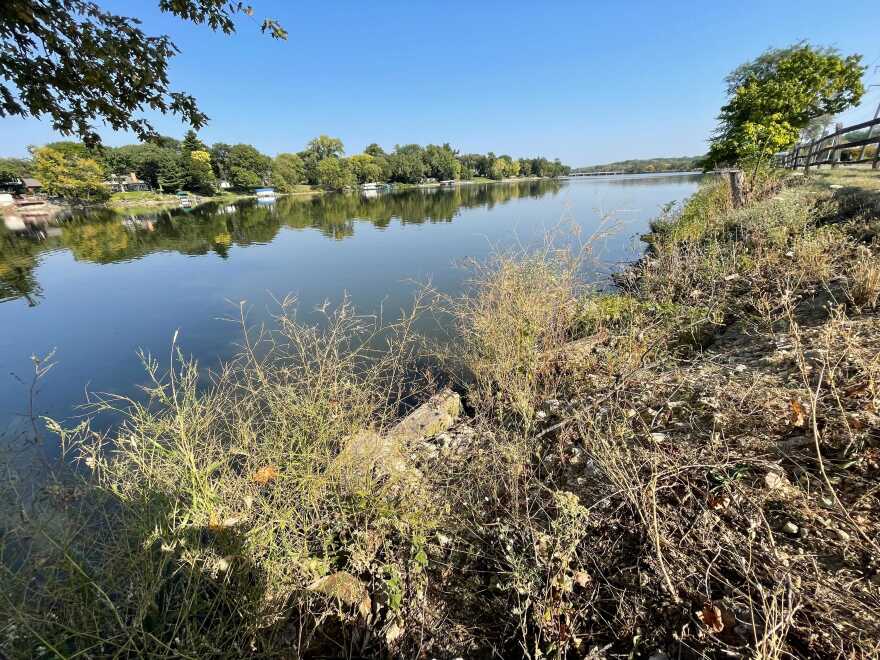Nutrient pollution in Illinois rivers is so high up that there’s no way the state can reach projected reduction in time.
The Nutrient Loss Reduction Strategy Biennial report comes from the Illinois Environmental Protection Agency and the Illinois Department of Agriculture. It shows that years of work between private and public agencies and millions of tax dollars did not significantly reduce nitrate or phosphorus being pumped into state rivers and, ultimately, the Mississippi River. Trevor Sample with the state’s Environmental Protection Agency said the situation is only getting more complicated.
“We saw river flow increased 25%, nitrate increased 13%, and total phosphorus increased 35% compared to our baseline,” said Sample. “And our 2025 goal is to show decreases in nitrate from 15% and total phosphorus by 25%.”
The statewide push to cut nutrient pollution is part of a broader federal plan established by the U.S. EPA in 2008 to reduce the size of the hypoxic zone. Sample characterizes this as a “dead zone” at the mouth of the Mississippi River and the Gulf of Mexico. Hypoxic means “lack of oxygen.” He explains that the severe level of nutrient pollutants pouring out of the Mississippi River reduces the levels of oxygen in the water to the point that it hinders the ability of aquatic life to breed and thrive, making the hypoxic zone of the Gulf increasingly uninhabitable.
“The 2008 plan originally called for the 45% reduction in nitrogen and phosphorus by 2015. By the time we got to 2015, they reconvened, and we had not met the goal,” said Sample. “In fact, it kept getting larger, for the most part, so they decided that that was probably an unrealistic timeline to begin with.”
The 2008 Gulf Hypoxia Action Plan called for the reduction of the hypoxic zone 3 to 5 year average of approximately 1900 square miles. The 2021 hypoxic zone measured over 6000 square miles. The size of the dead zone varies and fluctuates annually. The largest hypoxic zone measured over 8000 square miles during 2017.
For Illinois’ part, the state set a long-term goal of reducing nutrient pollution by 45%, but hasn’t set a date on when that goal will be met. What is clear is that even an interim goal of cutting nitrate and phosphorus pollution is proving elusive. Sample says heavier precipitation induced by climate change isn’t making matters any easier.
An Illinois climate assessment released last year by the Nature Conservancy reported that precipitation patterns in Illinois are expected to become more severe. But Olivia Dorothy with American Rivers says that climate change can’t be the only answer to why the state consistently fails to meet nutrient reduction targets.
“We can't pin all the blame on climate change and increases in precipitation,” said Dorothy. “There's a lot more things that farmers can be doing, to keep their soil on the field and keep their nutrients in the ground where it is useful and helpful for the production of crops.”
The report shows that over 80% of nitrate pollution comes from agriculture. The remaining 18% can be traced to sources like wastewater treatment facilities. Dorothy says that those treatment facilities have made significant improvements in reducing their nutrient footprint because the state steps in and regulates their operations. That differs from how agricultural production is handled, where farmers regulate themselves.
“We still are seeing increases overall, in the pollution problem,” said Dorothy.“Which really, you know, just gets us to that point of like, alright the regulations seem to be working on the one side that's maybe that's the more effective strategy if voluntary solutions aren't cutting it.”
The Rock River saw the greatest increase in nitrate pollution of any other river in Illinois, with an increase of 135% over the baseline years measured from 1980 and 1996. Catie Gregg with the Prairie Rivers Network is calling for stricter deadlines.
“We're supposed to have a 15% reduction in nitrate and a 25% reduction in phosphorus. And then at some unspecified point in the future, we're supposed to reach a 45% reduction in both of these and these are huge goals,” said Gregg. “In the meantime we're doing so little, and then we're looking at this and it's just overwhelming. We really need to set our own intervals, and they might not be on track currently, but we need to hold ourselves accountable.”
But it will likely continue to be an uphill climb. The Illinois Department of Transportation released a report earlier this year that projected that inbound shipments of chemical fertilizers to the state will increase by 65% by 2045. The IEPA’s Trevor Sample said the situation is “concerning.”
In the meantime, the Prairie Rivers Network put out a series of recommendations to improve one of the most important areas of concern when it comes to nitrate—drinking water. That includes calling for a state survey of nitrate in rural wells, digitizing well drilling records, reaching out to landowners with free testing and updating the Illinois State Water Plan.


